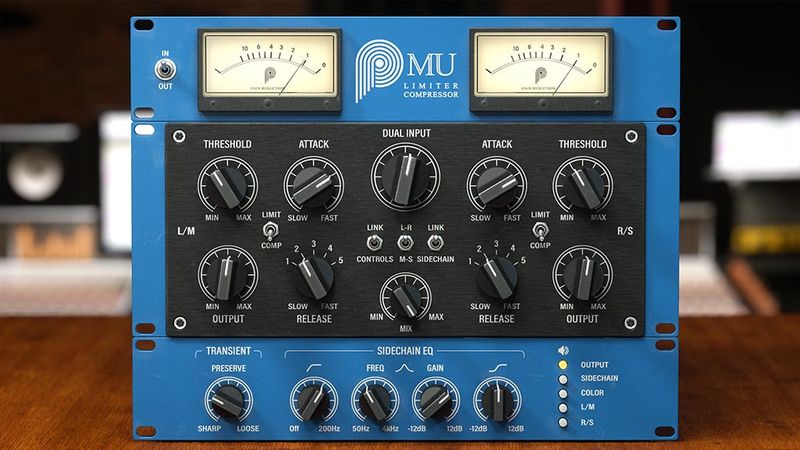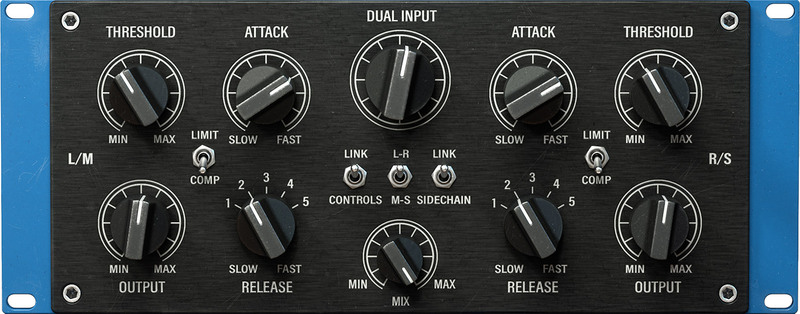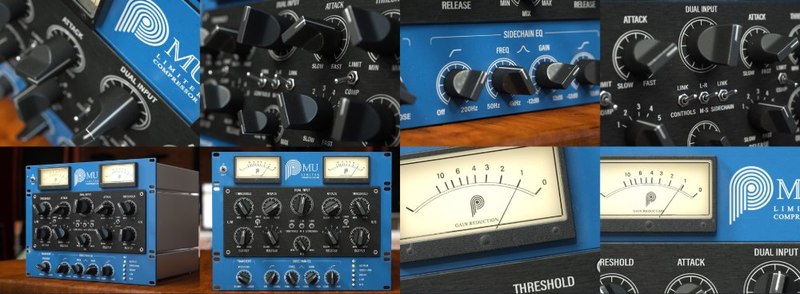- hot!
- sale
- top rated
An Industry-standard Tube Compressor
The most faithful emulation of a modern yet legendary tube compressor/limiter – perfect glue for mixing and mastering.
There are several reasons to use a variable-bias tube compressor. One is the exceptional compression transparency that this kind of compressor can achieve, even when pushed into extreme gain reduction. Another – and perhaps the most common – is their ability to add cohesion or “glue” to buses, whole mixes and masters.
Unfortunately, the original hardware is expensive and difficult to integrate with “in-the-box” workflows. Software emulations exist but most owners of the hardware agree that they cannot be compared to the original unit, as there’s always “something” missing.
With its unique Topology Preservation Technology, Pulsar Mu sounds objectively identical to the hardware in every production context, and even makes improvements such as an increased signal-to-noise ratio.

Improving on a Classic
Pulsar Mu is a stereo compressor operating in either Left/Right or Mid/Side modes, designed with mixing and mastering applications in mind, but also flexible enough for tracking. It can be used for levelling, limiting, or just to add a bit of analog warmth with its emulated tube signal path.

While reproducing the accurate SIFAM metering of the original unit, Pulsar Mu also provides a more modern visualization mode for fine-tuning compression settings, representing the waveform and gain reduction both over time and instantaneously.
Pulsar Mu also offers various options that apply to the sidechain signal. A popular mod of the original device was to add a high-pass filter, but Mu goes even further, offering a more complete equalization section, enabling to precisely adjust the compressor’s response to bass, midrange and treble using only four knobs.
Another addition is the possibility of advancing (look-ahead) or delaying (look-behind) the sidechain signal. This enables you to take ultimate control over transients, letting the compressor start to react before they happen, over even after they happen, opening up all kinds of creative uses.



How Does It Sound?
- Transparent but musical: The sound of Pulsar Mu is impressively transparent with a touch of warmth. It manages transients in a soft and musical way, even with extreme settings, unlike a FET or VCA compressor. With Mu, you can add movement while respecting the natural dynamics of a source.
- Mastering: The most classic use of Mu is in mastering: it brings the discreet "polish" and "glue" to subtly warm up any mix. It can be used either transparently as a leveller (with long attack and release), as a compressor to add glue (slow attack with fast release), or as a limiter (fast attack and fast release). Using Mu in Mid/Side mode gives you another way to increase the stereo image, or to curtail an overly wide mix.
- Drum buss: Pulsar Mu can quickly create the “glue” needed for cohesive drum buss processing, while still respecting transients – even those of a kick drum. Depending on the chosen gain reduction and release time, it can restore the room ambience essential for certain styles of music – especially when used as a parallel compressor.
- Acoustic guitar: On an acoustic guitar, with a relatively low gain reduction setting, Pulsar Mu creates a nice organic groove, while respecting the transients of the instrument. This subtlety is useful for livening up a dull, stiff guitar track, giving it edge and personality.
- Snare drum: Pulsar Mu can give body and consistency to thin snare drums sounds, even while preserving their transients, which are essential for helping them break through the mix. When pushed a little harder, Mu can help you recover sustain, harmonics, or even ambience.
- Vocals: Pulsar Mu sounds particularly good on vocals – especially with fairly high input and medium attack and release. It gives them the analog-style warmth to help them sit naturally, even in a dense mix.
Main Features
Topology Preserving Technology
Pulsar's modelling technology guarantees a perfect emulation of the behaviour of the original device. From the saturation of the magnetic flux in the transformers to the precise response of the tubes, to the effect of the tiny calibration defects, everything is perfectly reproduced. If you are curious, take a look at the technical article on the subject.
External Sidechain
The Pulsar Mu, as all compressors should do in the digital age, allows you to define an external sidechain input. This opens a very wide range of applications: ducking, de-essing, filtering the sidechain signal with your favourite EQ, or even applying dynamic processing.
Mid-Side Processing
The Pulsar Mu comes with built-in optional M/S encoding and decoding, that enable to process separately with different settings the sounds panned to the centre and those panned to the sides. Additionally, the “Listen” buttons simplify the setting by allowing you to listen only to Mids or Sides, and the modern visualization can be set to monitor only the channel you’re working on, so you will always know what you’re doing.
Look Ahead, Look Behind
This innovative feature enables to shift the timing of the gain reduction signal with respect to the input. The look-ahead enables the Mu to start reacting to transients even before they are played, ensuring a perfect limiting. Conversely, the look-behind delays the gain reduction, so that fast transients can be left unprocessed, the corresponding GR peak occurring too late. This opens up various possibilities like clipping to the transients after the Mu for example.
Flexible Sidechain Equalizer
The sidechain equalization section is simple but efficient. You can let your mix breathe by preventing low frequencies from triggering compression with the High-Pass filter, adjust the response to vocals or other instruments thanks to the parametric bell filter, and keep the influence of the top-end under control with the positive or negative High-Shelf filter.
Low CPU Consumption
The Pulsar team spent a ridiculous amount of time optimizing the processing so that it consumes very few system resources despite the very complex algorithm inside. The Pulsar Mu takes full advantage of the CPU’s features to do more with less. But if your computer can stand it and you enjoy making it suffer, you can always turn over-sampling on and process at up to 384 kHz!

System Requirements
Windows
- Windows 7 with SP1 / Windows 8.1 / Windows 10 (all 64-bit only)
- CPU: Intel Core i3 / i5 / i7 / i9 / Xeon or AMD Quad-Core minimum
- Memory: 4 GB RAM & 1 GB free disk space
- GPU: OpengGL 2.0 compatible GPU
- Monitor: Minimum 1024×768 Resolution (recommended 1920×1080) & 60 Hz Refresh rate
Compatible Plugin Formats (32 & 64-bit):
- AAX Native
- VST 2.4
- VST 3
Mac
- macOS10.9 and higher (M1 Apple Silicon supported) (64-bit only)
- CPU: Intel Core i3 / i5 / i7 / Xeon / Apple Silicon (M1)
- Memory: 4 GB RAM & 1 GB free disk space
- GPU: OpengGL 2.0 compatible GPU
- Monitor: Minimum 1024×768 Resolution (recommended 1920×1080) & 60 Hz Refresh rate
Compatible Plugin Formats (64-bit only):
- AAX Native
- Audio Unit
- VST 2.4
- VST 3
Activation:
- You need to have an account at ilok.com to be able to use Pulsar software.
- The Mac version of this software is 64-bit only and will not function on 32-bit systems.
Any references to any brands on this site/page, including reference to brands and instruments, are provided for description purposes only. For example references to instrument brands are provided to describe the sound of the instrument and/or the instrument used in the sample. Plugin Boutique do not have (nor do they claim) any association with or endorsement by these brands. Any goodwill attached to those brands rest with the brand owner. Plugin Boutique or its Suppliers do not accept any liability in relation to the content of the product or the accuracy of the description. "RHODES" is a registered trademark of Joseph A Brandstetter.
Product Reviews
Pulsar Mu | Variable-bias Compression Explained
Variable-bias Compression Explained Variable-bias compressors have a rich sound, featuring a soft knee, progressive and musical saturation, and...
